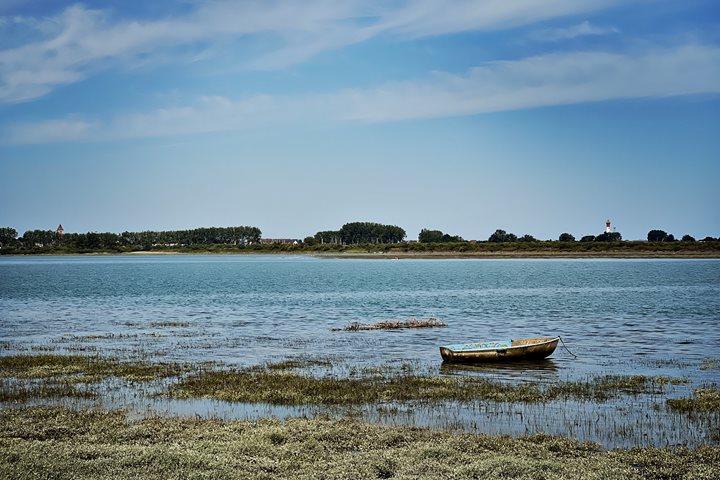One group drove along the beaches in the eastern Commonwealth sector, visiting memorial sites at both Juno Beach (where Canadian infantry landed) and Gold Beach (secured by the British). Juno Beach was also the location of the large artificial port known as Mulberry. In the museum at Arromanches-les-Bains, models and film footage explained the fascinating history of this extraordinary undertaking to transport a fully working harbour to Normandy and assemble it on the beaches. A technological success, Mulberry was crucial to the Allied success in the subsequent Battle of Normandy.
In the American sector, one group visited the famed Pointe du Hoc, scene of one of the most famous and daring assaults on D-Day, when several companies of men scaled the cliffs to secure the gun battery above – their success a testament to their training and bravery. Both groups were able to visit more intact German coastal batteries than the one at Pointe du Hoc – at both Longues-sur-Mer at Gold Beach and Crisbecq behind Utah Beach. Built as a part of the supposedly impregnable Atlantic Wall, both were quickly silenced by naval bombardment on D-Day and captured soon after. The thick concrete walls of the gun emplacements survive of course and will for some time; silent reminders of the events of 78 years ago.
Omaha Beach is perhaps the most famous of the five landing areas on D-Day. After exploring the sandy beaches in front of the steep bluffs, a more poignant visit was made to the American Cemetery at Colleville-sur-Mer. The final resting place of more than nine thousand US service personnel, and home to the memorial commemorating more than one and a half thousand servicemen with no known grave, the cemetery is a moving experience that puts the historical events in Normandy into perspective.
Heading north, stops were made at Utah Beach and Sainte-Mere-Eglise to discuss the actions that took place there and the role of airborne infantry, which secured ground on both flanks of the invasion area. From there it was only a short hop to Cherbourg, where National Geographic Explorer had redeployed. With a long distance across to cover, we sailed out of the impressive French harbour as soon as everyone was aboard, heading into a surprisingly peaceful English Channel and a picturesque sunset.
After overnighting on the Caen Canal, today was dedicated to learning more about the D-Day landings on 6 June 1944. Two tours departed National Geographic Explorer early in the morning, striking out to a range of different sites.





